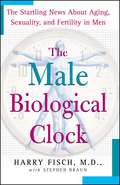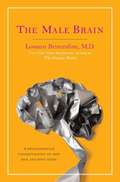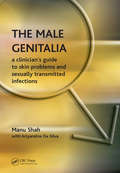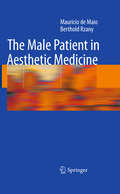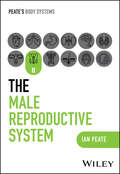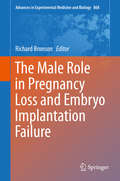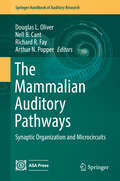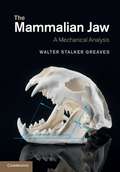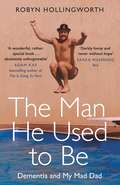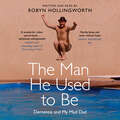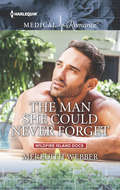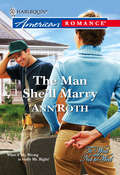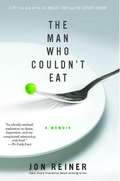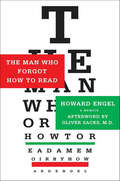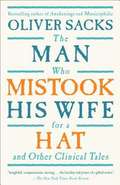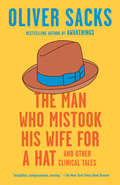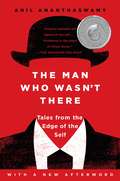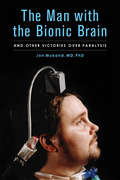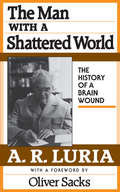- Table View
- List View
The Male Biological Clock
by Harry Fisch Stephen BraunSay "biological clock" and most people think "women. " Yet men have biological clocks too, reveals Dr. Harry Fisch, one of the country's leading experts in male infertility and author of this groundbreaking new book, "The Male Biological Clock. " Men's clocks tick at a different rate from women's and of course cause an entirely different set of bodily and behavioral changes over the course of a lifetime. But while men's clocks don't strike a "midnight" toll heralding an end to fertility the way menopause does for women, male fertility, testosterone levels, and sexuality all do decline with age. Dr. Fisch's book emphasizes that even young men can have testosterone levels as low as those of much older men, leading to infertility, sexual problems, and other serious health issues. Another startling revelation is that men over thirty-five are twice as likely to be infertile as men younger than twenty-five. In addition, as men age, the quality of their sperm declines significantly, giving rise to an increased chance of a Down syndrome baby, other genetic abnormalities, and miscarriage. Every couple should know all the risks and issues facing men, because these affect two of the most important things in their life: their ability to have children and their capacity to have good sex. "The Male Biological Clock" is must reading for every man and every couple who is struggling to have children or improve their sex life. Many of Dr. Harry Fisch's findings are startling -- beginning with the fact that infertility is not mostly a women's problem -- and he offers many helpful suggestions for how to deal with declining testosterone, changing sexual needs, and the fertility industry. We have all heard stories of men becoming fathers in their seventies or even eighties, yet most of us are unaware that these are dangerously deceptive exceptions. Older men face a number of increased risks as fathers, and often find their sex lives and well-being changing considerably. The good news: Much can be done to slow down and even reverse the effects of a man's biological clock. "The Male Biological Clock" tells you what you need to know and how you can achieve optimal fertility and sexuality.
The Male Brain: A Breakthrough Understanding of How Men and Boys Think
by Louann BrizendineA breezy and enlightening guide to women and a must-read for men, this book is the eagerly awaited follow-up book that demystifies the puzzling male brain.
The Male Genitalia: the Role of the Narrator in Psychiatric Notes, 1890-1990, v. 2, First Series (Radcliffe Ser.)
by Manu Shah Ariyaratne DeSilvaMedical problems of the male genitals are extremely common and male health is assuming a new importance as men are increasingly recognising the need to look after their bodies. The rates of sexually transmitted infections are rising rapidly in many countries, including a dramatic increase in HIV infection and the recent resurgence of syphilis.Patients with genital disease often present to their general practitioner, sexual health clinics, dermatology departments and urology clinics, and this quick reference guide aids easy diagnosis.Fully illustrated, with colour photographs, this is the ideal volume for anyone dealing with men with genital rashes, skin lesions and sexually transmitted diseases. It covers, in detail, the broad area of male genital disease encompassing dermatology and genito-urinary medicine.
The Male Patient in Aesthetic Medicine
by Berthold Rzany Mauricio De MaioThe demand for cosmetic procedures by male patients has increased in recent years. With this trend has come the realization that male aesthetic needs are different from female aesthetic needs. This book is the first hands-on guide dedicated exclusively to the aesthetic treatment of the male patient, and provides cosmetic surgeons with important information on how to obtain a natural male look for such patients. It explains facial aesthetics and the aging process in men, as well as the current aesthetic medicine techniques available. It also offers valuable strategies for avoiding and treating undesired results. Written by internationally known experts in the field, this unique guide enables cosmetic surgeons to achieve the best possible treatment outcomes, as well as increased satisfaction in male patients.
The Male Pill: A Biography of a Technology in the Making
by Nelly OudshoornThe Male Pill is the first book to reveal the history of hormonal contraceptives for men. Nelly Oudshoorn explains why it is that, although the technical feasibility of male contraceptives was demonstrated as early as the 1970s, there is, to date, no male pill. Ever since the idea of hormonal contraceptives for men was introduced, scientists, feminists, journalists, and pharmaceutical entrepreneurs have questioned whether men and women would accept a new male contraceptive if one were available. Providing a richly detailed examination of the cultural, scientific, and policy work around the male pill from the 1960s through the 1990s, Oudshoorn advances work at the intersection of gender studies and the sociology of technology. Oudshoorn emphasizes that the introduction of contraceptives for men depends to a great extent on changing ideas about reproductive responsibility. Initial interest in the male pill, she shows, came from outside the scientific community: from the governments of China and India, which were interested in population control, and from Western feminists, who wanted the responsibilities and health risks associated with contraception shared more equally between the sexes. She documents how in the 1970s, the World Health Organization took the lead in investigating male contraceptives by coordinating an unprecedented, worldwide research network. She chronicles how the search for a male pill required significant reorganization of drug-testing standards and protocols and of the family-planning infrastructure--including founding special clinics for men, creating separate spaces for men within existing clinics, enrolling new professionals, and defining new categories of patients. The Male Pill is ultimately a story as much about the design of masculinities in the last decades of the twentieth century as it is about the development of safe and effective technologies.
The Male Reproductive System (Peate's Body Systems)
by Ian PeatePEATE’S BODY SYSTEMS THE MALE REPRODUCTIVE SYSTEM A CONCISE, ILLUSTRATED, AND ACCESSIBLE GUIDE TO THE MALE REPRODUCTIVE SYSTEM Each of the twelve volumes in Peate’s Body Systems series is rooted in the belief that a deep and thorough understanding of the human body is essential for providing the highest standard of care. Offering clear, accessible and up-to-date information on different body systems, this series bridges the gap between complex scientific concepts and practical, everyday applications in health and care settings. This series makes for an invaluable resource for those committed to understanding the intricacies of human biology, physiology and the various systems that sustain life. The Male Reproductive System is the perfect companion for students and newly registered practitioners across nursing and allied health fields with an interest in male reproductive health, providing a comprehensive yet easy-to-digest guide for both academic and clinical application. Equips healthcare students and practitioners with the necessary information to provide safe and competent careFeatures colourful illustrations to aid comprehension, clarify complicated concepts, and render content more engaging and accessible Empowers readers to adapt to a rapidly evolving healthcare landscape, preparing them for the future of healthcare delivery Contains information necessary for effective patient care of those with testicular torsion, Lower Urinary Tract Symptoms (LUTS), prostate cancer, and other male reproductive diseases and conditions
The Male Role in Pregnancy Loss and Embryo Implantation Failure
by Richard BronsonNovel topics compiled in this one-of-a-kind volume provide tantalizing hints for clinical application through future translational research. Only recently have we come to ask what role the male might play in pregnancy loss and embryo implantation failure, beyond contributing an abnormal set of paternal chromosomes at fertilization. This volume explores the recent evidence that these conditions might also be related to the transmission of previously unrecognized chromosomal micro-deletions and duplications, or via the epigenetic dysregulation of early embryonic gene function by spermatozoal microRNAs or alterations in sperm DNA methylation patterning, or by DNA damage secondary to either reactive oxygen species or environmental toxicants. In addition, the composition of seminal plasma has been found to be highly complex, containing many factors that play important roles in altering the uterine environment and the female immune system permissive of embryo implantation and trophectoderm outgrowth leading to successful pregnancy. Coverage includes an examination of both spermatozoa and seminal fluid component factors.
The Mammalian Auditory Pathways: Synaptic Organization And Microcircuits (Springer Handbook of Auditory Research #65)
by Arthur N. Popper Richard R. Fay Douglas L. Oliver Nell B. CantThe auditory system is a complex neural system composed of many types of neurons connected into networks. One feature that sets the auditory system apart from other sensory systems, such as somatosensory or visual systems, is the many stages of neural processing that occur between the ear in the periphery and the cerebral cortex. Each stage is composed of specialized types of neurons connected in specific microcircuits that perform computations on the information about sound. To understand this processing, all the tools of neuroscience must be employed. The proposed text integrates cell biology, synaptic physiology, and electrophysiology to fully develop the topic, presenting an overview of the functional anatomy of the central auditory system. It is organized based on the neuronal connectivity of the central auditory system, which emphasizes the neurons, their synaptic organization, and their formation of functional pathways and microcircuits. The goal of the book is to stimulate research into the cell biology of the central auditory system and the characteristics of the specific neurons and connections that are necessary for normal hearing. Future research on the development of the central auditory including that employing stem cells will require such information in order to engineer appropriate therapeutic approaches.
The Mammalian Jaw
by Walter Stalker GreavesMammalian skull structure is notably diverse; however at a basic level the jaw mechanism is remarkably similar, if not essentially the same, in the majority of mammals. Using simple models that are compared with real animals at every step, this book examines the basic structural features of the mammalian jaw mechanism from a mechanical point of view. It explores how the mechanical constraints placed on the jaw have contributed to the evolution of an efficient basic structure, used by many mammals, which precludes mechanical difficulties and uses a minimum amount of bone tissue. Throughout the book the emphasis is on conceptual understanding, with explanations linked together to form a complete story that can be applied to both fossil and extant mammals. Summarising over forty years of research from one of the leading pioneers in 3D jaw mechanics, this is a must-have for anyone interested in mammalian jaw morphology.
The Man Behind the Badge
by Sharon ArcherThe Taming of Dr Alex Draycott A troublesome little niece and nephew to look after, a crumbling cottage to repair and a busy A&E to run gives Dr Alex Draycott plenty on her plate even before she meets the rebelliously charming Dr Callum Brooksby! Feisty Alex can handle a challenge but it seems Callum is out to tame her heart The Man Behind the Badge However hard citygirl and newdocintown Kayla Morgan tries, she cant resist being impressed by the horseriding, cattleherding, lawenforcing Tom Jamieson! But taking a bullet in the line of duty has made cop Tom rethink his work hard, party harder lifestyle will he ever let Kayla see the real man behind the badge?
The Man He Used To Be: Dementia and My Mad Dad
by Robyn Hollingworth'This is a wonderful, rather special book: funny, warm and loving but also thought-provoking and deeply moving. Absolutely unforgettable - ironically.'ADAM KAY, Sunday Times bestselling author of This Is Going To HurtInadvertent cross-dressing. Attempted murder. Jail break. A waltz at a funeral. A hernia the size of Guernsey.Heartbreaking and darkly comic, these are the moments that litter the messy road from cared-for to carer, a journey that Robyn Hollingworth finds herself on when she's only twenty-five years old. Leaving London to return home to rural South Wales, Robyn finds that it's her old life - same teddy bears resting on her pillow, their bodies tucked under the duvet; same view of the garages behind which she'd had her first cigarette and first kiss - but so much has changed. Her dad, the proud, charmingly intelligent, self-made man who made people laugh, is in the grip of early onset Alzheimer's. His brilliant mind, which saw him building power stations and literally bringing light into the lives of others, has succumbed to darkness. As Robyn settles back in the rhythms of life in the rain-soaked vast Welsh valleys, she keeps a diary charting her journey as the dad she knew disappears before her eyes. Lyrical, poignant and with flashes of brilliant humour, The Man He Used To Be explores how in helping others we can heal ourselves. Previously published in hardback as My Mad Dad.
The Man He Used To Be: Dementia and My Mad Dad
by Robyn Hollingworth'This is a wonderful, rather special book: funny, warm and loving but also thought-provoking and deeply moving. Absolutely unforgettable - ironically.' ADAM KAY, Sunday Times bestselling author of This Is Going To HurtInadvertent cross-dressing. Attempted murder. Jail break. A waltz at a funeral. A hernia the size of Guernsey.Heartbreaking and darkly comic, these are the moments that litter the messy road from cared-for to carer, a journey that Robyn Hollingworth finds herself on when she's only twenty-five years old. Leaving London to return home to rural South Wales, Robyn finds that it's her old life - same teddy bears resting on her pillow, their bodies tucked under the duvet; same view of the garages behind which she'd had her first cigarette and first kiss - but so much has changed. Her dad, the proud, charmingly intelligent, self-made man who made people laugh, is in the grip of early onset Alzheimer's. His brilliant mind, which saw him building power stations and literally bringing light into the lives of others, has succumbed to darkness. As Robyn settles back in the rhythms of life in the rain-soaked vast Welsh valleys, she keeps a diary charting her journey as the dad she knew disappears before her eyes. Lyrical, poignant and with flashes of brilliant humour, The Man He Used To Be explores how in helping others we can heal ourselves. Previously published in hardback as My Mad Dad.
The Man She Could Never Forget: The Man She Could Never Forget / The Nurse Who Stole His Heart / Saving Maddie's Baby / A Sheikh To Capture Her Heart / The Fling That Changed Everything / A Child To Open Their Hearts (Wildfire Island Docs #1)
by Meredith WebberReunion on Wildfire Island Returning to her island home is a bittersweet experience for nurse Caroline Lockhart. This paradise is where she spent many happy years, but it stopped feeling like home the moment her first love, Keanu, walked out of her life, breaking her innocent young heart. Doctor Keanu Russell is stunned to see Caroline again, and distressed to see the pain in her eyes. He can't change the past, but maybe he can convince Caroline that they do have a future...
The Man She'll Marry
by Ann RothNot What She Expected After a painful breakup and the loss of her job, Cinnamon Smith feels there's only one place she can go--her best friend Fran's bed-and-breakfast in the small town of Cranberry, Oregon. The first person she meets on her arrival is Nick Mahoney, Fran's handyman. Cinnamon's attraction to Nick is immediate, and the feeling is definitely mutual. All That She Wants But Cinnamon has spent years working toward a certain kind of life, a life she can't have with Nick. Spending time in Cranberry, and with him, is beginning to change all that. Then she gets a job offer that would put her career goals back on track.... Which means Cinnamon has to choose between the life she's always wanted and the love that's right in front of her.
The Man Who Couldn't Eat
by Jon ReinerIn this beautifully written memoir, both gut-wrenching and inspiring, award-winning writer Jon Reiner tells the story of his agonizing battle with Crohn's disease--and the extraordinary places his hunger and obsession with food took him. I'm a glutton in a greyhound's body, a walking contradiction, in the grip of the one thing I can't have--food, writes Reiner, who details what happens when that which keeps you alive, that bonds us together and marks life's special occasions, becomes a toxic substance, an inflammatory invader. His unvarnished account depicts an explosive medical emergency, a marriage in crisis, children faced with grown-up fears, a man at a life-and-death crossroads sifting through his past and his present. And it captures a tough, courageous climb out of hopelessness as Reiner began a process of healing in body and mind, discovering a renewed appetite, any way he could manage it, for the things that truly matter most. crossroads sifting through his past and his present. And it shows us a tough, courageous climb out of despair and hopelessness. Aided by the loving kindness of family, friends, and strangers and by a new approach to food, Reiner began a process of healing in body and mind. Most of all, he chose life--and a renewed appetite, any way he could manage it, for the things that truly matter most. present. And it shows us a slow, courageous climb out of despair and hopelessness. Aided by the loving kindness of family, friends, and strangers and by a new approach to food, Reiner began a process of healing in body and mind. Most of all, he chose life--and a renewed appetite, any way he could manage it, for the things that truly matter most.
The Man Who Forgot How to Read: A Memoir
by Howard EngelThe remarkable journey of an award-winning writer struck with a rare and devastating affliction that prevented him from reading even his own writingOne hot midsummer morning, novelist Howard Engel picked up his newspaper from his front step and discovered he could no longer read it. The letters had mysteriously jumbled themselves into something that looked like Cyrillic one moment and Korean the next. While he slept, Engel had experienced a stroke and now suffered from a rare condition called alexia sine agraphia, meaning that while he could still write, he could no longer read. Over the next several weeks in hospital and in rehabilitation, Engel discovered that much more was affected than his ability to read. His memory failed him, and even the names of old friends escaped his tongue. At first geography eluded him: he would know that two streets met somewhere in the city, but he couldn't imagine where. Apples and grapefruit now looked the same. When he returned home, he had trouble remembering where things went and would routinely ?nd cans of tuna in the dishwasher and jars of pencils in the freezer. Despite his disabilities, Engel prepared to face his dilemma. He contacted renowned neurologist Dr. Oliver Sacks for advice and visited him in New York City, forging a lasting friendship. He bravely learned to read again. And in the face of tremendous obstacles, he triumphed in writing a new novel. An absorbing and uplifting story, filled with sly wit and candid insights, The Man Who Forgot How to Read will appeal to anyone fascinated by the mysteries of the mind, on and off the page.
The Man Who Mistook His Wife for a Hat and Other Clinical Tales
by Oliver SacksIn his most extraordinary book, "one of the great clinical writers of the 20th century"(The New York Times)recounts the case histories of patients lost in the bizarre, apparently inescapable world of neurological disorders. Oliver Sacks's The Man Who Mistook His Wife for a Hat tells the stories of individuals afflicted with fantastic perceptual and intellectual aberrations: patients who have lost their memories and with them the greater part of their pasts; who are no longer able to recognize people and common objects; who are stricken with violent tics and grimaces or who shout involuntary obscenities; whose limbs have become alien; who have been dismissed as retarded yet are gifted with uncanny artistic or mathematical talents. If inconceivably strange, these brilliant tales remain, in Dr. Sacks's splendid and sympathetic telling, deeply human. They are studies of life struggling against incredible adversity, and they enable us to enter the world of the neurologically impaired, to imagine with our hearts what it must be to live and feel as they do. A great healer, Sacks never loses sight of medicine's ultimate responsibility: "the suffering, afflicted, fighting human subject."
The Man Who Mistook His Wife for a Hat: And Other Clinical Tales
by Oliver SacksIn his most beloved and extraordinary book, Dr. Sacks recounts the case histories of patients inhabiting the compelling world of neurological disorders. Featuring a preface never before included.Oliver Sacks's The Man Who Mistook His Wife for a Hat tells the stories of individuals afflicted with perceptual and intellectual disorders: patients who have lost their memories and with them the greater part of their pasts; who are no longer able to recognize people and common objects; whose limbs seem alien to them; who lack some skills yet are gifted with uncanny artistic or mathematical talents. In Dr. Sacks's splendid and sympathetic telling, his patients are deeply human, and his tales are studies of struggles against incredible adversity. A great healer, Sacks never loses sight of medicine's ultimate responsibility: "the suffering, afflicted, fighting human subject."
The Man Who Mistook His Wife for a Hat: And Other Clinical Tales
by Oliver SacksIn his most extraordinary book, the bestselling author of Awakenings and "poet laureate of medicine&” (The New York Times) recounts the case histories of patients inhabiting the compelling world of neurological disorders, from those who are no longer able to recognize common objects to those who gain extraordinary new skills.Featuring a new preface, Oliver Sacks&’s The Man Who Mistook His Wife for a Hat tells the stories of individuals afflicted with perceptual and intellectual disorders: patients who have lost their memories and with them the greater part of their pasts; who are no longer able to recognize people and common objects; whose limbs seem alien to them; who lack some skills yet are gifted with uncanny artistic or mathematical talents. In Dr. Sacks&’s splendid and sympathetic telling, his patients are deeply human and his tales are studies of struggles against incredible adversity. A great healer, Sacks never loses sight of medicine&’s ultimate responsibility: &“the suffering, afflicted, fighting human subject.&”
The Man Who Wasn't There
by Anil AnanthaswamyIn the tradition of Oliver Sacks, a tour of the latest neuroscience of schizophrenia, autism, Alzheimer's disease, ecstatic epilepsy, Cotard's syndrome, out-of-body experiences, and other disorders--revealing the awesome power of the human sense of self from a master of science journalismAnil Ananthaswamy's extensive in-depth interviews venture into the lives of individuals who offer perspectives that will change how you think about who you are. These individuals all lost some part of what we think of as our self, but they then offer remarkable, sometimes heart-wrenching insights into what remains. One man cut off his own leg. Another became one with the universe.We are learning about the self at a level of detail that Descartes ("I think therefore I am") could never have imagined. Recent research into Alzheimer's illuminates how memory creates your narrative self by using the same part of your brain for your past as for your future. But wait, those afflicted with Cotard's syndrome think they are already dead; in a way, they believe that "I think therefore I am not." Who--or what--can say that? Neuroscience has identified specific regions of the brain that, when they misfire, can cause the self to move back and forth between the body and a doppelgänger, or to leave the body entirely. So where in the brain, or mind, or body, is the self actually located? As Ananthaswamy elegantly reports, neuroscientists themselves now see that the elusive sense of self is both everywhere and nowhere in the human brain.
The Man Who Wasn't There: Investigations into the Strange New Science of the Self
by Anil Ananthaswamy*Nominated for the 2016 PEN/E.O. Wilson Literary Science Writing Award**An NBC News Notable Science Book of 2015**Named one of Publishers Weekly's Best Books of 2015**A Book of the Month for Brain HQ/Posit Science**Selected by Forbes as a Must Read Brain Book of 2015* *On Life Changes Network's list of the Top 10 Books That Could Change Your Life of 2015*In the tradition of Oliver Sacks, a tour of the latest neuroscience of schizophrenia, autism, Alzheimer's disease, ecstatic epilepsy, Cotard's syndrome, out-of-body experiences, and other disorders--revealing the awesome power of the human sense of self from a master of science journalism. Anil Ananthaswamy's extensive in-depth interviews venture into the lives of individuals who offer perspectives that will change how you think about who you are. These individuals all lost some part of what we think of as our self, but they then offer remarkable, sometimes heart-wrenching insights into what remains. One man cut off his own leg. Another became one with the universe. We are learning about the self at a level of detail that Descartes ("I think therefore I am") could never have imagined. Recent research into Alzheimer's illuminates how memory creates your narrative self by using the same part of your brain for your past as for your future. But wait, those afflicted with Cotard's syndrome think they are already dead; in a way, they believe that "I think therefore I am not." Who--or what--can say that? Neuroscience has identified specific regions of the brain that, when they misfire, can cause the self to move back and forth between the body and a doppelgänger, or to leave the body entirely. So where in the brain, or mind, or body, is the self actually located? As Ananthaswamy elegantly reports, neuroscientists themselves now see that the elusive sense of self is both everywhere and nowhere in the human brain.From the Hardcover edition.
The Man Who Wasn't There: Investigations into the Strange New Science of the Self
by Anil Ananthaswamy*Nominated for the 2016 PEN/E.O. Wilson Literary Science Writing Award**An NBC News Notable Science Book of 2015**Named one of Publishers Weekly's Best Books of 2015**A Book of the Month for Brain HQ/Posit Science**Selected by Forbes as a Must Read Brain Book of 2015* *On Life Changes Network's list of the Top 10 Books That Could Change Your Life of 2015*In the tradition of Oliver Sacks, a tour of the latest neuroscience of schizophrenia, autism, Alzheimer's disease, ecstatic epilepsy, Cotard's syndrome, out-of-body experiences, and other disorders--revealing the awesome power of the human sense of self from a master of science journalism. Anil Ananthaswamy's extensive in-depth interviews venture into the lives of individuals who offer perspectives that will change how you think about who you are. These individuals all lost some part of what we think of as our self, but they then offer remarkable, sometimes heart-wrenching insights into what remains. One man cut off his own leg. Another became one with the universe. We are learning about the self at a level of detail that Descartes ("I think therefore I am") could never have imagined. Recent research into Alzheimer's illuminates how memory creates your narrative self by using the same part of your brain for your past as for your future. But wait, those afflicted with Cotard's syndrome think they are already dead; in a way, they believe that "I think therefore I am not." Who--or what--can say that? Neuroscience has identified specific regions of the brain that, when they misfire, can cause the self to move back and forth between the body and a doppelgänger, or to leave the body entirely. So where in the brain, or mind, or body, is the self actually located? As Ananthaswamy elegantly reports, neuroscientists themselves now see that the elusive sense of self is both everywhere and nowhere in the human brain.From the Hardcover edition.
The Man Without a Shadow
by Joyce Carol OatesIn 1965, neuroscientist Margot Sharpe meets Elihu Hoopes: the "man without a shadow," who will be known, in time, as the most-studied and most famous amnesiac in history. A vicious infection has clouded anything beyond the last seventy seconds just beyond the fog of memory.Over the course of thirty years, the two embark on mirrored journeys of self-discovery: Margot, enthralled by her charming, mysterious, and deeply lonely patient, as well as her officious supervisor, attempts to unlock Eli's shuttered memories of a childhood trauma without losing her own sense of self in the process. Made vivid by Oates' usual eye for detail, and searing insight into the human psyche, The Man Without a Shadow is eerie, ambitious, and structurally complex, unique among her novels for its intimate portrayal of a forbidden relationship that can never be publicly revealed. outside time?Atmospheric and unsettling, The Man Without a Shadow is a poignant exploration of loneliness, ethics, passion, aging, and memory--intricately, ambitiously structured and made both vivid and unnerving by Oates's eye for detail and her searing inPraise for Joyce Carol Oates"Oates's precise and inspired writing is close to witchcraft."--Jeanne Moreau"Joyce Carol Oates . . . is simply the most consistently inventive, brilliant, curious, and creative writer going, as far as I'm concerned."--Gillian Flynn"What keeps us coming back to Oates Country is her uncanny gift of making the page a window, with something happening on the other side that we'd swear was like life itself." --The New York Times Book Review"No writer today has today has delved into the mysterious circumstances of being alive at this time in America--explored our entire social strata--to the extent that she has."--The Nation"A writer of extraordinary strengths . . . she has dealt consistently with what is probably the great American theme--the quest for the creation of self. . . . Her great subject, naturally, is love."--The Guardiansight into the human psyche.
The Man with Bionic Brain: And Other Victories over Paralysis
by Jon MukandA behind-the-scenes view of cutting-edge medical research and discoveries that are helping people with disabilities regain control, this book is an insightful look into the possibilities of technology and the associated ethical, political, social, and financial controversies. After he was stabbed and paralyzed from the neck down, Matthew Nagle, a former high school football star, made scientific history when neurosurgeons implanted microelectrodes in his brain that recognized his thought patterns, allowing him to control a computer cursor. With the BrainGate system he was able to use e-mail, manipulate a prosthetic hand, adjust TV settings, and play video games--all just by thinking. Dr. Jon Mukand, his research physician and a rehabilitation specialist, weaves together Matt's story with firsthand accounts of other courageous survivors of stroke, spinal injuries, and brain trauma and the amazing technology that improves their lives. Not only a discussion of scientific advances in the battle against paralysis, The Man with the Bionic Brain is an inspirational book about how biomedicine gives hope to people with disabilities and enables them to take control of their lives. Jon Mukand, MD, PhD, is rehabilitation medicine specialist and medical director of the Southern New England Rehabilitation Center and serves on the clinical faculty of Brown University and Tufts University. He is the editor of Vital Lines: Contemporary Fiction about Medicine, Articulations: The Body and Illness in Poetry, and Rehabilitation for Patients with HIV Disease. He lives in Providence, Rhode Island.
The Man with a Shattered World: The History of a Brain Wound
by A. R. LuriaRussian psychologist A. R. Luria presents a compelling portrait of a man’s heroic struggle to regain his mental faculties. A soldier named Zasetsky, wounded in the head at the battle of Smolensk in 1943, suddenly found himself in a frightening world: he could recall his childhood but not his recent past; half his field of vision had been destroyed; he had great difficulty speaking, reading, and writing. Much of the book consists of excerpts from Zasetsky’s own diaries. Laboriously, he records his memories in order to reestablish his past and to affirm his existence as an intelligent being. Luria’s comments and interpolations provide a valuable distillation of the theory and techniques that guided all of his research. His “digressions” are excellent brief introductions to the topic of brain structure and its relation to higher mental functions.
